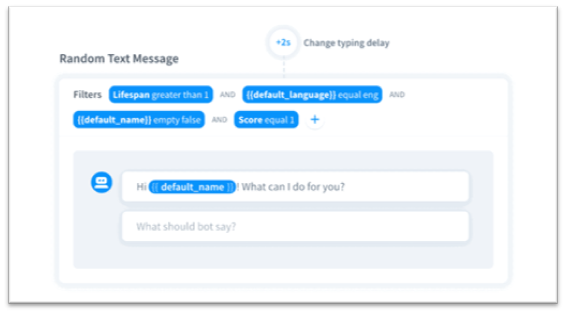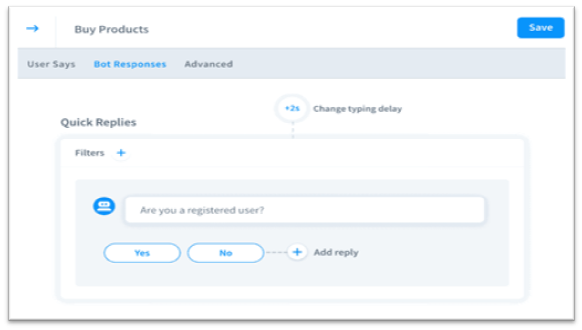Artificial Intelligence (AI)
How to Apply Artificial Intelligence in Chat Filters
In this article, we shall discuss how to apply Artificial Intelligence (AI) in chat filters. If you are building a chat room, you need to create a chat filter to remove offensive words from the conversation.

In this article, we shall discuss how to apply Artificial Intelligence (AI) in chat filters.
If you are building a chat room, you need to create a chat filter to remove offensive words from the conversation. A chat filter is a script commonly used in chat rooms for automatically scanning the users’ comments. This process starts immediately after posting the comments, and filters remove or censor inappropriate words. These filters also decide the flow of the chat in a conversation.
Suppose you want to make a Career in Artificial Intelligence. In that case, you should have a strong foundation of statistics and mathematics, one programming language, preferably Python, and the fundamentals of machine learning and its various algorithms. It would help you to start a career in AI.
The people who are already in the AI and related industries can pursue the AI Program Leader. It will help them upgrade themselves to the latest trends and technologies related to AI and machine learning.

Image Credit: geeksforgeeks
As technology is advancing with time, the application of AI is increasing in every domain. Human beings capabilities like understanding the complexities of various languages, computer vision, speech, and building new intelligent ideas are now possible using AI technology. For that, we have to update with the latest developments in AI and its advanced areas.
Here, we will discuss the application of Artificial Intelligence in chatbot filters.
There are two categories of chat filters used in chat rooms or internet forums – the basic and advanced chatbot filters. The basic bot filters scan only for particular strings of letters and censor them. It doesn’t take care of the meaning of those letters in the context of the sentence.
Advanced chatbot filters examine the letters or words in the sentence context, and hence, their filtering is more sophisticated. Some more advanced chatting filters use a regular expression to find and replace terms in a sentence.
Table of Contents
1. Types of Chat Filters
There are five different types of chatbot filters:
Attribute: In this type of filter, you have to create your quality to create a rule.
Lifespan: In this type, the bot acts based on the lifespan value.
Score: Here, we use the confidence score value to choose the response that should allow the bot trigger.
Resolve Query: In this filter, the bot responds depending on the user’s input.
Trigger: Determine triggers to activate bot responses and actions.
These are the different filters that may apply to a chatbot. We can use multiple filters for a single response. A user can see the reactions only if they meet the criteria in the filter.
2. Need for Artificial Intelligence in Chat Filters
Artificial Intelligence changed the way we think about data. It changed the people’s paradigm about how we integrate information and analyze data, and based upon the data, how to improve the decision-making ability of machines. AI is already interfering with our day-to-day life. From Google search results recommendations to Apple’s virtual assistant Siri, we use AI in every aspect of life.
Typically most filters use a binary allow/disallow list, but we know that languages are not binary. They are complex and modulated.
In many older internet forums, some common swear words will be allowed based on context. One can build a regular expression or RegEx tool, and it can filter the string out of terms, but it cannot distinguish between some critical phrases. For that, we need to apply artificial intelligence and natural language processing in creating chat rooms.
3. Application of Natural Language Processing in Chat Filters
In the case of chatbot filters, we use natural language processing. NLP is a sub-domain of AI that deals with the interaction between computers and human language. It helps the filters process and analyze the vast amount of natural language data that results in a machine capable of understanding the available content more clearly.
One can program our chatbots to reply according to the context of the conversation and the data about the user. For example, one may ask the visitor whether he/she is a vegetarian or non-vegetarian and display the menu based upon the visitor’s reply using chat filters.

Image Credit: chatbot.com
In another example, consider a situation where you want your bot to forward registered users to your website and the new visitors to a registration form. Then, we have to create a flow to check if the user is registered or not.

Image Credit: chatbot.com
If a user clicks on yes, it shows him one kind of bot response and if he chooses no, it would lead to a different action. We can implement all this filtering in a chatbot by using NLP.
It is not easy for computers to understand the rules that dictate information passing using natural language processing. Sometimes these rules may be highly complex; for example, when we use a sarcastic remark to convey the message. On the other hand, sometimes there may be situations where these rules may be low-leveled; for example, one can use the character “s” for the plural form of the word.
To comprehensively understand the human language, one needs to know the language and how the terms are connected to the sentence to deliver the desired message.
NLP necessitates the algorithms to identify and extract the natural language rules for converting unstructured language data into structured language data. This is how AI and NLP are applied to chat filters.
Overall, we can say that artificial intelligence can make chatbot filters very easy and efficient. However, the techniques deployed in a particular scenario would vary case by case.
4. Frequently Asked Questions (FAQs)
a. What are the chatbots and chat filters?
Ans: Chatbots are software applications for conducting an online conversation between humans and machines. It can be a text-based or text-to-speech-based system and can respond according to the user’s query.
A chat filter is used in a chatbot to censor the inappropriate words or sentences in a chat. Chat filters decide the flow of the conversation based on the user’s input.
b. What are Artificial Intelligence (AI) and Natural Language Processing (NLP)?
Ans: It can learn a specific task by a machine without explicitly programming for that task. AI systems are designed to make decisions by analyzing real-time data.
NLP is a subdomain of AI, specially programmed for interaction between humans and computers. Using NLP, a machine can read, decipher, understand, and make sense of a human language in such a practical manner.
c. How to apply AI into a chat filter?
Ans: Using a particular NLP algorithm, we can apply artificial intelligence into chat filters to smooth the undesirable content in a chat. There are different ways in which we can control the flow of the conversation in a chat room.
AI Tools
A Guide To Using AI for Knowledge Management
Using AI for knowledge management and to transform massive data pools into actionable insights is not just beneficial; it’s becoming a necessity to stay competitive.

In the digital era, the fusion of AI technology with knowledge management is revolutionizing the way organizations manage and exploit their informational assets. Using AI for knowledge management and to transform massive data pools into actionable insights is not just beneficial; it’s becoming a necessity to stay competitive. Keep reading to unlock the full potential of AI-driven knowledge management.
1. The Intersection of AI and Knowledge Management: A Synergy Explained
Knowledge management traditionally involves capturing, organizing, and distributing knowledge across an organization. When AI steps into this territory, the potential for enhanced efficiency and decision-making emerges. AI algorithms can sort through and analyze data at a rate no human can match, revealing patterns and insights that can be critical for strategic planning. This melding of AI with knowledge management practices is a modern alchemy, creating an invaluable resource.
One of the most significant benefits of integrating AI into knowledge management is the automation of data processing. AI systems can continuously learn from new data, refining their algorithms and providing even richer insights over time. Moving from static data repositories to dynamic knowledge hubs, businesses are now armed with constantly evolving intelligence. This represents a profound shift from data being a static historical record to a dynamic, predictive tool for decision-making.

Customization is another strong suit of AI in this space. Rather than one-size-fits-all information resources, AI can personalize knowledge dissemination to the needs of each employee. The focus moves beyond mere information access to ensuring the right knowledge reaches the right person at the right time.
2. Implementing AI in Your Knowledge Management Strategy
Transitioning to an AI-driven knowledge management system begins with identifying the scope and objectives of knowledge needed. Organizations must be clear about the kind of knowledge that is most valuable and how AI can aid in its cultivation and dissemination.
Following initial evaluations, the selection of appropriate AI tools and technologies becomes the next crucial step. There are various AI solutions designed for specific knowledge management tasks, from natural language processing for content analysis to machine learning models that predict trends and behaviors.
Integrating AI requires a cultural shift within the organization. Employee buy-in is crucial, and it is important to address any concerns about job displacement head-on. Training and educating the workforce on the benefits and use of AI systems can facilitate smoother adoption, ensuring everyone understands the role of AI as a partner, not a replacement, in the knowledge ecosystem.
3. The Impact of AI on Knowledge Retention and Dissemination

The true value of AI in knowledge management is often most visible when assessing knowledge retention and dissemination within the organization. AI-driven systems can significantly enhance the ability to capture institutional knowledge, store it and make it available in engaging, interactive formats that increase retention.
Analytics are also central to measuring the impact of AI on knowledge management. By evaluating these metrics, businesses can see whether the knowledge is being leveraged effectively, which areas may need more focus, and where improvements can be made.
Furthermore, AI can be a boon for training and development programs. By adapting to the learning pace and style of individual employees, AI can deliver personalized training recommendations and content, leading to more effective learning outcomes.
Altogether, AI is transforming the realm of knowledge management with its capacity to automate, personalize, and revolutionize how information is processed and utilized. Challenges notwithstanding, the rewards of integrating AI into knowledge management strategies are profound, paving the way for smarter.
-

 Instagram4 years ago
Instagram4 years agoBuy IG likes and buy organic Instagram followers: where to buy them and how?
-

 Instagram4 years ago
Instagram4 years ago100% Genuine Instagram Followers & Likes with Guaranteed Tool
-

 Business5 years ago
Business5 years ago7 Must Have Digital Marketing Tools For Your Small Businesses
-

 Instagram4 years ago
Instagram4 years agoInstagram Followers And Likes – Online Social Media Platform
















